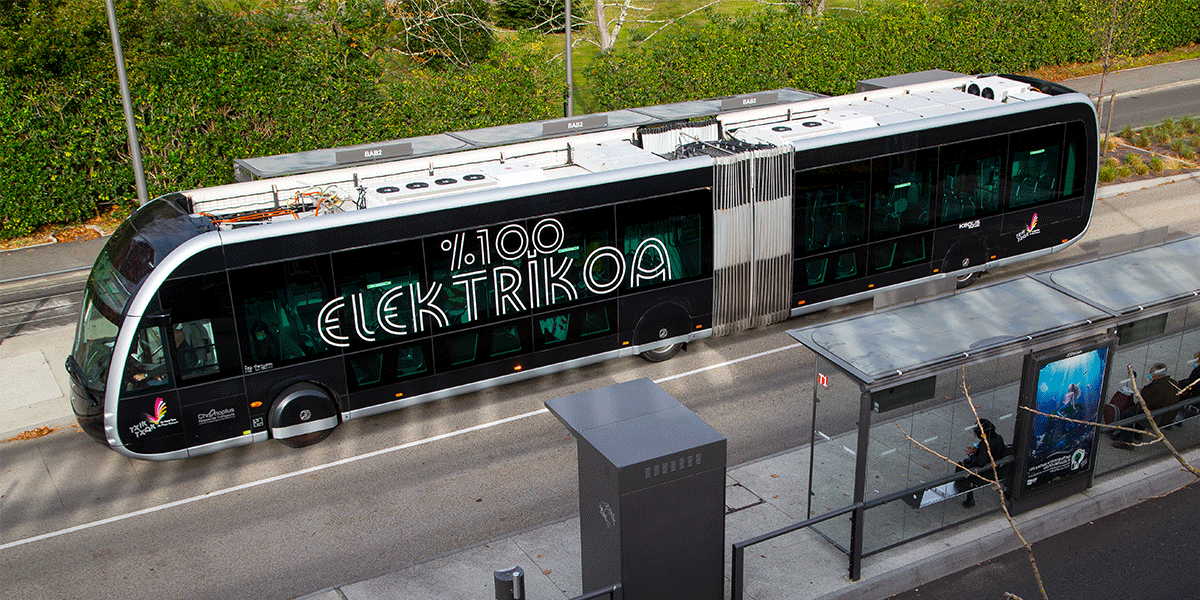As the effects of decades of ignoring the climate crisis loom, there has never been a more important time to take meaningful action in decreasing our carbon footprint.
While public transit contributes less to overall greenhouse gas emissions than other transportation methods, like single-occupancy vehicles, climate change is an issue that must be fought by all parts of the transportation industry. At Keolis, our commitment is to enhance everyday life in cities and communities by imagining safe, smart, and sustainable mobility solutions accessible to each and everyone. Achieving this standard means we must focus on the benefits of ecological transition. Curbing the use of internal combustion engines helps reduce greenhouse gas emission and allows for the creation and use of more environmentally friendly fleets.
Keolis’ experience with energy transition in North America, in Australia, and across Europe have helped transit agencies worldwide begin converting their fleets and networks. Sustainable sources of energy like electricity, natural gas, biogas, hydrogen, and other alternative fuels are a welcome change for agencies, stakeholders, and passengers alike. Operating over 4,000 alternative energy vehicles globally, about 20 percent of Keolis’ fleet is powered sustainably, a number that is expected to grow as more agencies choose conversion.
In 2021 alone, Keolis has assisted in the electrification of several fleets. In April, Västraffik awarded Keolis Sweden a 10-year contract to operate and maintain a fleet of buses, which includes replacing biodiesel and biogas-powered vehicles with fully-electric ones – part of the transit agency’s goal to totally electrify its services by 2030. This goal is shared by many agencies, including Transport for New South Wales (TfNSW) in New South Wales, Australia, and Transport and Main Roads (TMR) in Queensland, Australia. Both make use of fleets that run primarily on diesel fuel, and both have trusted Keolis’ expertise in electrification to move their initiatives forward. We expect to avoid nearly 14,000 tons of CO2 emissions by the contract’s end as a result.
Supporting large conversion projects requires experience. Replacing vehicles with alternatively fueled ones is only one aspect of an overall conversion program. The infrastructure for these new vehicles must also be put in place, and these state-of-the-art vehicles must be operated and maintained by a skilled workforce. In each contract, Keolis has gained experience in how to best implement new depots equipped with the necessary recharging capabilities and ensure our workforce has the specialized training and expertise to maximize the benefits of conversion.
The projects listed below are just a sampling of Keolis’ work in each speaking to a different aspect of its expertise in the field:
- In June of 2021, Keolis began operating and maintaining a fleet of partially electric buses in Denmark which is projected to cut CO2 emissions by over 5,500 tons per year – a weight equal to about 785 elephants. For the launch, a new depot has been built in Korsør, and three other depots were equipped with the infrastructure needed to recharge the electric buses.
- In December 2020, Keolis launched 246 electric buses in the eastern provinces of Gelderland and Overijssel in the Netherlands – the largest e-bus fleet in Europe.
- In 2019 in the Pau region of France, Keolis supported the launch of a 100% hydrogen-powered bus rapid transit (BRT), a system that includes bus-dedicated roadways – a world first for an 18-metre BRT vehicle. In the same year, Keolis launched Europe’s first 100% electric BRT service (43 buses) in Amiens.
- In 2018, Keolis Canada announced the first long-term demonstration project of a 100% electric 5G-connected autonomous shuttle on public roads.
Looking toward the future, Keolis’ standing as the premier partner in electrification is only expected to grow. Conversion projects in North America, for example, are picking up the speed necessary to fight climate change, and Keolis already has firm footing in helping grow these initiatives with work in Reno, Nevada; Greensboro, North Carolina; and Victor Valley, California, where it has recently launched a new, largely natural gas-powered bus network.
With a commitment to the health and safety of passengers and the environment, and the experience to drive tangible change, Keolis is equipped to make sustainable mobility an everyday reality in North America and beyond.
